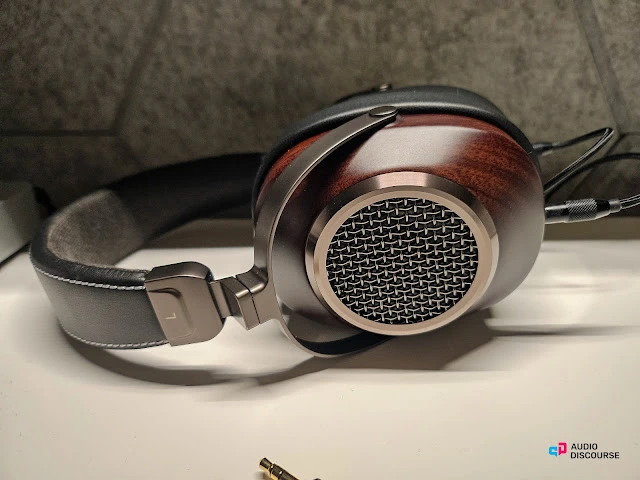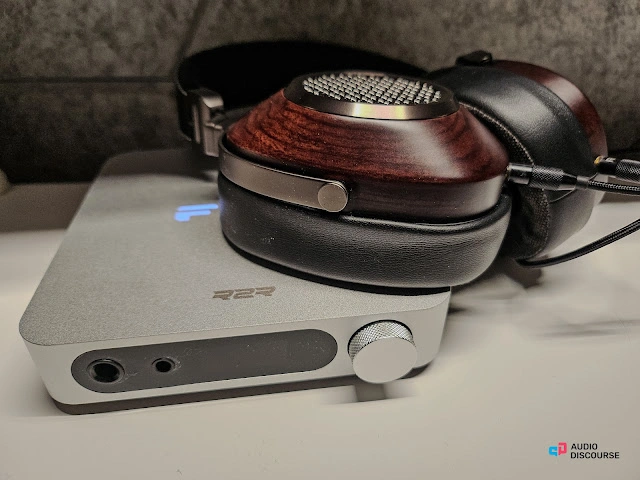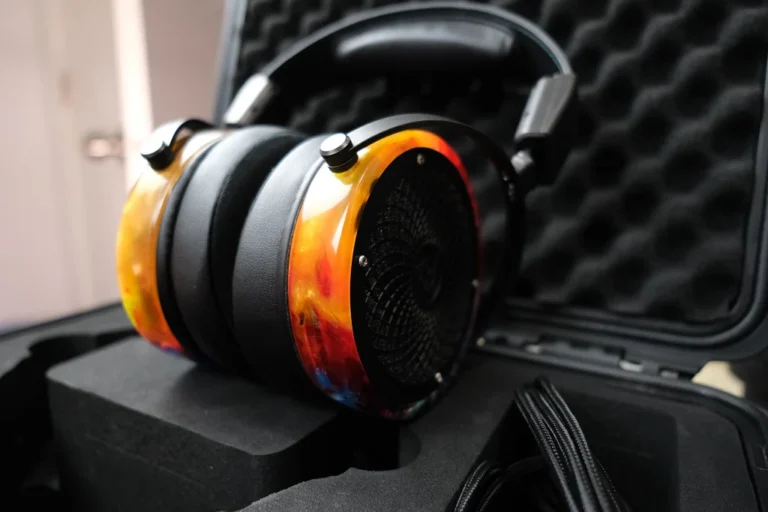Sivga Anser Over-Ear Headphones Review2024

Sivga Anser Over-Ear Headphones Review introduction
Chinese company Sivga is well-known for its affordable wooden headphones and high-quality construction, and the newest Anser headphones are no exception.
This review unit was provided by Sivga directly.
This unit’s wood type was not specified by Sivga, however it is dark mahogany/brown tinted, surprisingly light, and incredibly comfortable. The open-back device has a sizable round aluminum grill with a smooth, sophisticated round beveled edge on the front.

Both the headband and the headphone pads have a layer of soft, breathable gray fabric that feels great to the touch. This is a hybrid pad because the pads feature a leather exterior. With these, comfort is paramount, and I think these wood headphones are among the most comfortable I’ve ever used. Its excellent softness and light weight make it incredibly comfortable to wear, and the clamping force is relatively low. Additionally, the unit features rotating yokes to provide a correct fit on various heads.
Both sides of the cups have 3.5mm jacks, and the provided cable ends in a 3.5mm stereo connector as well. A 1/4-inch adaptor is included with Sivga. The cable is good overall and features a black fabric braid. It is lightweight, easy to use, and doesn’t tangle too much. In addition to being black, the connections are made of machined metal and have a pleasant appearance overall.

Sound Impressions
The Anser’s sound characteristic is warm and rich, with a dark treble range, a focus on the upper-mids, and a slightly boosted bass response. It has a generally subdued, nearly muffled sound profile that is also simple to listen to and non-fatiguing.

The one I own has a little higher bass range with a pleasant and tasteful bass boost. It fills in the low end sufficiently to ensure that the overall sound profile is not lean, but it does not have a lot of subbass impact or hit hard. Naturally, the treble—or lack thereof—also contributes to maintaining the overall tonality’s rich, weighty body.
The midrange is fairly even and consistent. I never found this irritating forward in my piano jazz or vocal music as I would have anticipated. There is a tiny accent in the upper midrange, but it is not as noticeable as it may appear in the graph.
However, I don’t like how dark the treble is. This range has a significant dip that results in a warmer body and a more luscious, approachable sound rather than a lot of excitement. There isn’t a lack of air or soundstage because there is still upper treble extension, but on many of my recordings, there is a perceptible lack of energy, and occasionally the headphones seem smooth but a little lifeless.

Plotting the Sennheiser HD600 over the Anser, it is evident that the bass on the Anser is larger and heavier than on the HD600 reference. Even though most of the mid-range is comparable, I think the HD600 has a far stronger treble range, making the sound less gloomy and constrained. That’s saying a little considering some people think the HD600’s treble is a little veiled, while others think it’s flawless.
Personally, I would like a touch more treble on the Anser, and maybe even a bit more on the HD600. Although the Anser has a deeper bottom, the overall sound is somewhat more muted and euphonic due to the darker treble.
Final Thoughts
For people who want a slightly neutral-dark tuning, the Anser is a very pleasant headphone with good tuning. It is reasonably priced, well-made, stylish, and pleasant to wear. It also blends nicely with a variety of musical styles.






